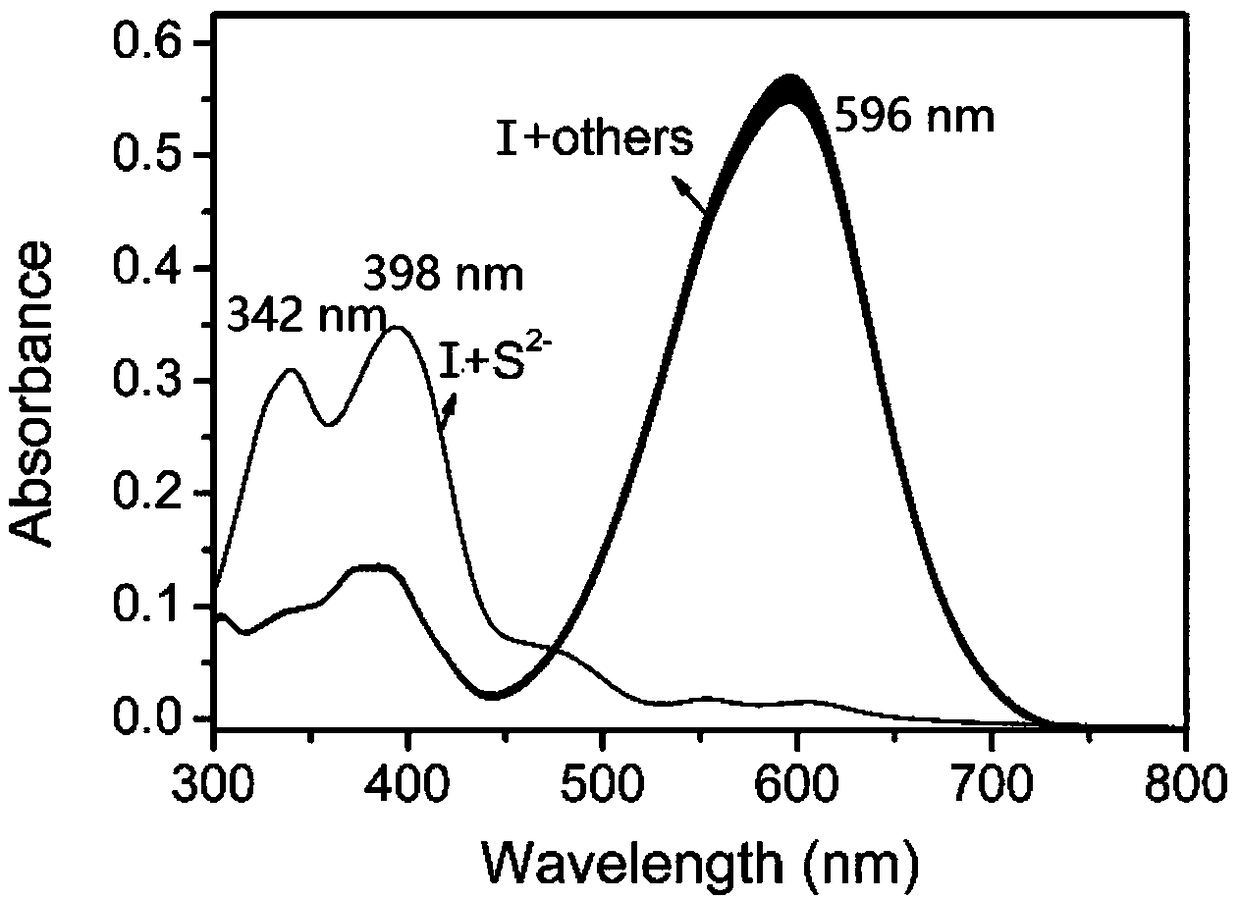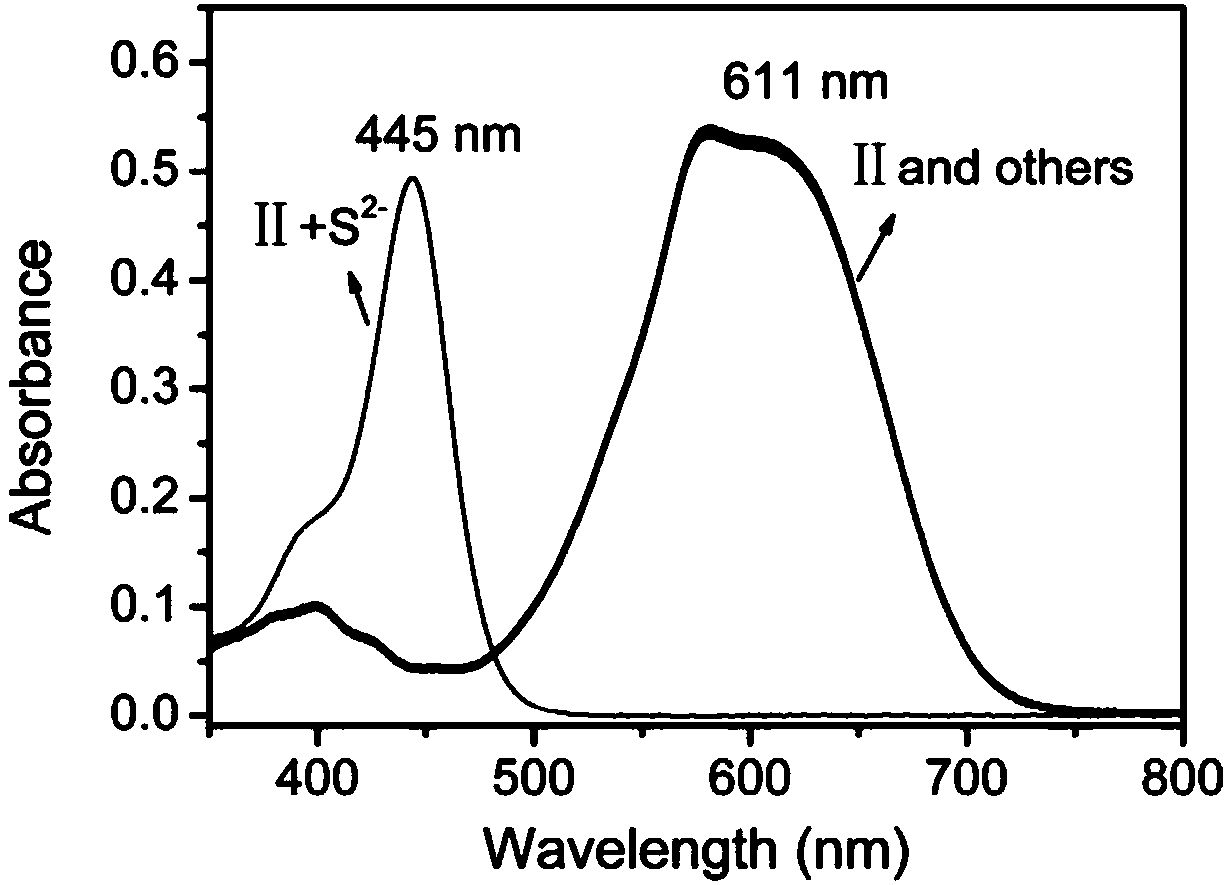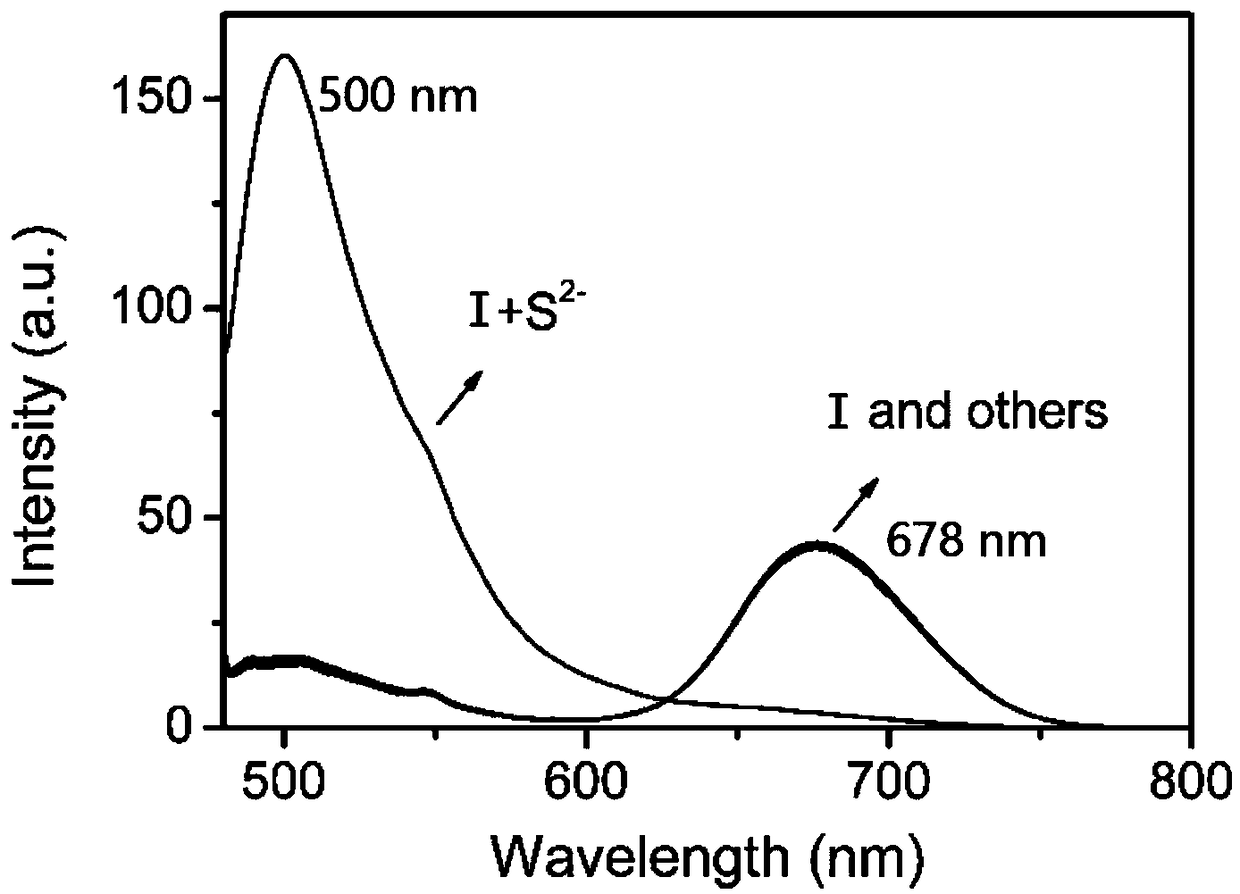Fluorescence probe capable of visually inspecting firearms residues and preparation method and application of fluorescence probe
A technology of shooting residues and fluorescent probes, which is applied in the field of chemical analysis of trace evidence in forensic science, achieving the effect of simple synthesis route, low cost and high sensitivity
- Summary
- Abstract
- Description
- Claims
- Application Information
AI Technical Summary
Problems solved by technology
Method used
Image
Examples
Embodiment 1
[0034] Example 1 Synthesis and characterization of ratio fluorescent probe for determination of shooting residue
[0035] 7-(Diethylamino)-3-formylcoumarin (122mg, 0.6mmol) and 2-(3-cyano-4,5,5-trimethylfuran-2-ene)propanedicyanide ( 1g, 0.4mmol) was dissolved in absolute ethanol (5.0mL). NaOH (1-2 mg) was added to the solution at 80°C and stirred for 1 hour. The resulting solid was filtered and washed with cold ether. The residue was recrystallized from methanol to obtain the desired product as a dark blue solid, which is the fluorescent probe I of the present invention, 110.8 mg (65%). 1 H-NMR (300MHz, CDCl 3 ): δ7.94(s,1H, Ar-H),7.92(d,J=15.4Hz,1H,-CH δ =CH-),7.40(d,J=9.6Hz,1H,Ar-H),7.38(d, J=15.4Hz,1H,-CH δ =CH-),6.70(dd,J=2.6Hz,J=9.6Hz,1H,Ar-H),6.51(d,J=2.6Hz,1H,Ar-H),3.51(q,J=7.2Hz ,4H,-CH 2 CH 3 ),1.73(s,6H,-CH 3 ),1.28(t, J=7.2Hz,6H,-CH 2 CH 3 ),ppm.MS:[M+1] + = 427.28.
[0036] 3-formyl coumarin 343 (161mg, 0.6mmol) and 2-(3-cyano-4,5,5-trimethylfuran-2-ene)propaned...
Embodiment 2
[0037] Example 2 Fluorescent probe recognition S 2- Selective UV-Visible spectrum.
[0038] Dissolve fluorescent probes I and II in PBS buffer (10mmol / L, pH=7.4, 90% DMSO) to prepare a solution of 10μmol / L, fluorescent probe I has a strong absorption peak at 596nm; fluorescent probe II has a strong absorption peak at 611nm, which is 15nm red-shifted than fluorescent probe I. Add 50mol / L of S to the solution 2- , After similar analytes and primer ions (similar analytes include: F - , Cl - , Br - , I - , SCN - , CH 3 COO - ; Primer ion components include: N 3 - , Pb 2+ , ClO 3 - , K + , Ti 3+ , NO 3 - , Ba 2+ ), only to join S 2- Then, the absorption peak of fluorescent probe I near 596nm disappeared, and two strong absorption peaks appeared near 342nm and 398nm; the absorption peak of fluorescent probe II near 611nm disappeared, and one near 445nm appeared. Strong absorption peak; and the color of the solution changes from dark blue to yellow. However, there is no significant dif...
Embodiment 3
[0039] Example 3 Fluorescent probe recognition S 2- Selective fluorescence spectrum.
[0040] The fluorescent probe I / II was dissolved in PBS buffer (10mmol / L, pH=7.4, 90% DMSO) to prepare a solution of 10μmol / L, the fluorescent probe I appeared a strong emission peak at 678nm; Needle II has a strong emission peak at 710nm, which is 32nm red-shifted from fluorescent probe I. Add 50μmol / L of S to the solution 2- , After similar analytes and primer ions (similar analytes include: F - , Cl - , Br - , I - , SCN - , CH 3 COO - ; Primer ion components include: N 3 - , Pb 2+ , ClO 3 - , K + , Ti 3 + , NO 3 - , Ba 2+ ), only to join S 2- After that, the emission peak of fluorescent probe I at 678nm disappeared; a new emission peak appeared at 500nm; the emission peak of fluorescent probe II at 710nm disappeared, and a new emission peak appeared at 511nm; in addition, use 365nm Observation under the irradiation of ultraviolet light shows that the fluorescent color changes from red to ligh...
PUM
 Login to View More
Login to View More Abstract
Description
Claims
Application Information
 Login to View More
Login to View More - R&D Engineer
- R&D Manager
- IP Professional
- Industry Leading Data Capabilities
- Powerful AI technology
- Patent DNA Extraction
Browse by: Latest US Patents, China's latest patents, Technical Efficacy Thesaurus, Application Domain, Technology Topic, Popular Technical Reports.
© 2024 PatSnap. All rights reserved.Legal|Privacy policy|Modern Slavery Act Transparency Statement|Sitemap|About US| Contact US: help@patsnap.com










